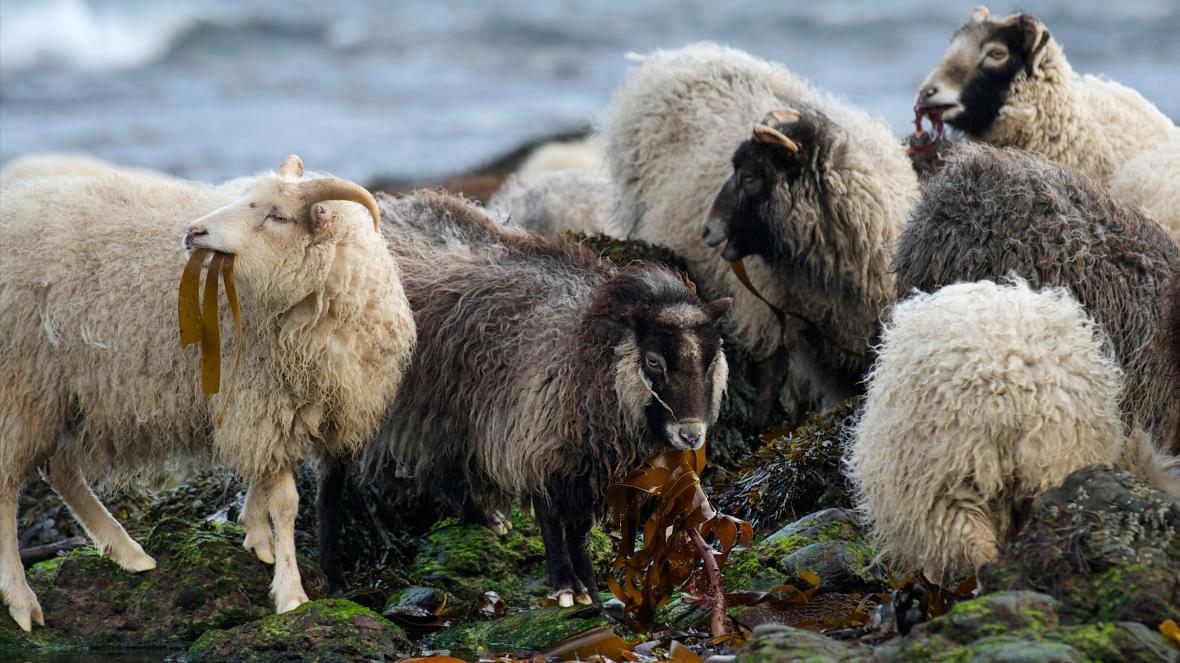THE SLOW FOOD PRESIDIA
Sustaining quality production at risk of extinction; protecting unique regions and ecosystems; recovering traditional processing methods and working to safeguard native breeds and local plant varieties.
After cataloguing the first hundred products at risk of extinction with the Ark of Taste, Slow Food International took a step further by entering the world of the production process to learn about the areas of origin, meet producers, promote their products, skills and knowledge.
There are several hundred Presidia throughout the world, and in Scotland, the Shetland Isles is home to one very special Presidia.
589 Presidia Globally
4 Presidia in the UK
1 in Scotland

The North Ronaldsay Sheep
On the shores of the northernmost island of the Scottish Orkney archipelago, the North Ronaldsay sheep lives wild.
This sheep is the oldest breed in Northern Europe and among the oldest and most rare in the world. According to a Danish investigation of old bones on the Orkney Islands, their DNA dates back 8,000 years, as old as the origins of island agriculture itself. Descendants of the North European short-tailed sheep, the North Ronaldsay is smaller and lighter than modern breeds, weighing on average 35kg (live weight) and adapting in very peculiar conditions.
On Orkney, as in the rest of the Scottish Highlands, the traditional social system is known as “crofting”: a form of land tenure and small-scale food production characterized by its common working communities. In 1832, the crofters wanted to rear cattle on their land instead of sheep as it was deemed more profitable. The Laird (the lord of the local manor) at that time, however, had worked in India and had developed an interest in sheep farming. He suggested that the crofters built a sea dyke (a dry-stone wall) in order to keep both cattle and sheep. The 13.5 mile dyke was duly built around the island to keep the sheep on the shore and off the land. This separation resulted in the preservation of the North Ronaldsay breed by preventing cross-breeding, the downfall of many other sheep breeds.

The 22km dry stone wall
The North Ronaldsay sheeps’ unusual diet may also be helping to combat climate change.
North Ronaldsay sheep have adapted over the centuries to thrive on their unique diet of foraged seaweed. The sheep sleep when the tide is high and eat when it ebbs, grazing on the lashings of damp kelp left behind by the receding tide.
But these sheep may unknowingly be helping to fight climate change. Recent research has found that animals enjoying a diet that includes seaweed produce less methane than those eating grain-based animal feed or grass. Methane is a powerful greenhouse gas that, while it doesn't stay in the atmosphere as long as carbon dioxide, is more dangerous to the climate due to how effectively it absorbs heat. It is estimated that around 25% of global warming is produced by methane. So not only should we be protecting these sheep because they are endangered, they are even more important in helping to look after our planet.

Grazing on Scottish seaweed
The unique, natural link between the island and the sheep results in an equally unique farming system. Crofters own their sheep collectively, grazing them on the foreshore with communal rights to this marginal land. A few times each year there is the “Punding” –during which crofters work together to gather the flocks and check their health, clip their wool, and select those to be slaughtered. Shearing takes place in summer and slaughtering in winter or early spring. Lambing is normally from May onwards. Lambs are with their mothers for one year until the ewes are about to lamb again. Sheep are not slaughtered until after three years old. The Shetland abattoir is a community owned abattoir, where North Ronaldsay sheep are taken together to be slaughtered.
The breed is renowned for its variety of natural fleece shades: black and white, light and dark greys, and ‘tanny’ shades of brown. Each sheep yields around 1 kg of wool. It is ideal for clothes, rugs, scarves, and outdoor wear. Each fleece needs to be cleaned and this is done off the island, but then the fleeces are sent back, and the rest of the processing is done on North Ronaldsay in a refurbished lighthouse building owned by the North Ronaldsay Trust.
To learn even more about their incredible history and understand their importance, take a look at Wendy Barrie’s online booklet.
To learn more about Slow Food Presidia throughout the World visit the Fondazione Slow Food website.
Discover more about what we do



